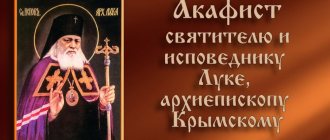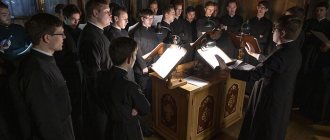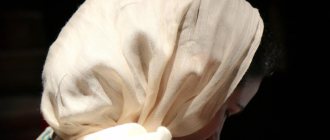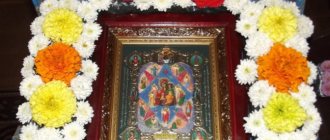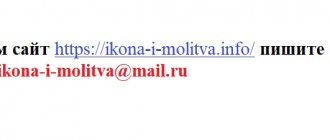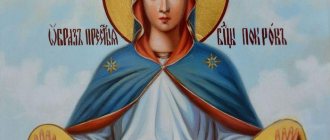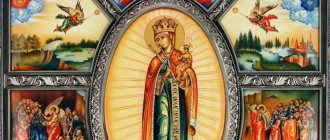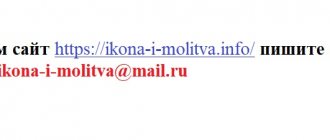Saint Luke of Crimea (Voino-Yasenetsky) is loved and revered not only by the Orthodox. His books on medicine are studied by medical students. The sick who were cured by the holy surgeon are still alive today. Those who studied at his lectures are successfully treating and operating today.
Having become a saint, he still helps the suffering today. Therefore, people turn to him in prayer before various operations.
St. Luka (Voino-Yasenetsky)
Prayer
O all-blessed confessor, holy saint, our Father Luke, great servant of Christ! With tenderness, we bow the knee of our hearts, and falling to the race of your honest and multi-healing relics, like the children of our father, we pray to you with all diligence: hear us sinners and bring our prayer to the merciful and philanthropic God, to whom you now stand in the joy of the saints and with the faces of an angel. We believe that you love us with the same love with which you loved all your neighbors while you were on earth.
Ask Christ our God: may he establish in his holy Orthodox Church the spirit of right faith and piety, may he give to her shepherds holy zeal and care for the salvation of the people entrusted to them: to observe the right of believers, to strengthen the weak and infirm in the faith, to instruct the ignorant, to reprove the contrary. Give us all a gift that is useful to everyone, and everything that is useful for temporary life and eternal salvation. Strengthening our cities, fruitful lands, deliverance from famine and destruction. Comfort for those who are grieving, healing for those who are ill, return to the path of truth for those who have lost their way, blessing from a parent, education and teaching for a child in the Passion of the Lord, help and intercession for the orphaned and needy. Grant us all your archpastoral and holy blessing, so that through you we will get rid of the wiles of the evil one and avoid all enmity and disorder, heresies and schisms.
Grant us God-pleasing passage through the field of temporary life, guide us on the path leading to the villages of the righteous, deliver us from airy ordeals and pray for us to the all-powerful God: that in eternal life with you we may unceasingly glorify the Father and the Son and the Holy Spirit, to Him belongs all glory and honor. and dominion forever and ever. Amen.
Life path of St. Luke (Voino-Yasenetsky): doctor and priest
The life path of Valentin Feliksovich ─ this is the secular name of the saint, is full of bright, tragic events. The title of his book, “I Loved Suffering,” speaks precisely to this. Having read it, it is impossible to forget or remain indifferent to the life of a great contemporary who preserved dignity, honesty, wisdom, and deepest faith in circumstances that easily broke people.
The birthplace of Saint Luke is the city of Kerch. 1877, a boy was born into the family of a Catholic nobleman. Since childhood, I loved drawing. Therefore, no one was surprised that, after graduating from art school, he went to study in Germany to become an artist.
And suddenly, he drops everything and goes to study to become a doctor.
Later he would write:
“Short hesitation ended in the decision that I do not have the right to do what I like, but I am obliged to do what is useful for suffering people.”
He studied conscientiously, comprehended science so deeply that in a year he could receive a professorship. But Valentin was of little interest in his career. After graduating from high school, he begins the unprestigious path of a zemstvo doctor. People around were perplexed.
“I was offended that they did not understand me at all, because I studied medicine with the sole purpose of being a village, peasant doctor all my life, helping poor people,” the bishop recalled.
Therefore, Valentin Feliksovich mastered eye surgery. He knew: in dirty, impoverished villages, ordinary people suffer from blinding trachoma. He treated sick people in the hospital and at home. It is impossible to count how many people had their sight restored: the blind flocked in lines to the wonderful doctor.
Worked hard. I performed about a thousand operations per year. He was engaged in science. Discovered a new method of pain relief. Wrote a dissertation and received a doctorate.
Interesting fact
When Valentin Feliksovich Voino-Yasenetsky was working on the book “Essays on Purulent Surgery” (for which he was given the Stalin Prize in 1946), he had an obsessive thought: “When this book is written, the name of the bishop will be on it.” And so it happened.
He found his future wife during the Russian-Japanese company. Both served in the hospital: he operated, she was a nurse. Then the family often changed their place of residence. There were few doctors, and the young doctor resignedly went to where he was sent.
In 1919, when his wife was not even forty years old, she died of tuberculosis and fever. The mother of four children was nurse S.S. Beletskaya, whom the future saint asked about this. And a couple of years later he became a priest. A little later he took monastic vows. Now he bore the name - Luke.
Useful materials
He operated in a snow-white robe, but at lectures and various meetings he appeared only in vestments. He prayed the day before and before operations, and blessed those present. Once an icon disappeared from the operating room, and he left completely. He promised to return with the Mother of God. The authorities were outraged. When the wife of a high-ranking official became seriously ill, the icon was returned so that the “obstinate priest” could operate on the sick woman himself.
The saint spoke magnificently in public. The dialogue with the evil security officer Peters in the Tashkent court is familiar to almost everyone today.
─ How do you believe in God, priest and professor Yasenetsky-Voino ? Have you seen your God?
─ I really haven’t seen God, citizen public prosecutor. But I operated a lot on the brain and, when I opened the skull, I never saw the mind there either. And I didn’t find any conscience there either.
The rebellious priest-surgeon faced eleven years of torture in camps and exile. The bishop sat with the “punks”, treated them, gave away their last clothes, endured torture and bullying. Never betrayed anyone. I didn't cry to anyone. He endured it like everyone else. The machine of brutal repression failed to break him.
St. Luka Krymsky
He served time in the North three times. I always found an opportunity to heal and be useful to people. The most severe was the exile in Plakhino. There were 200 km left to the Arctic Circle. It is difficult to understand how the saint survived. His memories:
“Instead of second frames, there were flat ice floes frozen on the outside. The cracks in the windows were not sealed with anything, and in some places in the outer corner daylight was visible through a large crack. There was a pile of snow on the floor in the corner. A second similar pile, never melted, lay inside the hut at the threshold of the front door. All day and night I heated the iron stove. When I sat warmly dressed at the table, it was warm above the waist, and cold below.”
Here Bishop Luke managed to baptize two children. Later he said:
“In addition to three huts in the camp, there were two human dwellings, one of which I took for a haystack, and the other for a pile of manure. It was in this last one that I had to baptize. I had nothing: no vestments, no missal, and in the absence of the latter, I composed prayers myself, and made something like an epitrachelion out of a towel. The wretched human habitation was so low that I could only stand bent over. A wooden tub served as a font, and all the time the Sacrament was being performed, I was disturbed by a calf spinning around near the font.”
It happened that inhuman suffering, interrogations in a conveyor belt for thirteen days without sleep, horrific conditions, beatings to a pulp, a punishment cell led to murmurs. Somehow he cut a large artery. No, I didn’t plan suicide. I tried to arrange a little respite in the infirmary. He survived. He did not disgrace his faith and his title.
In 1941 he asked to go to the front. He promised to serve out the remaining term after the Victory. He helped a huge number of wounded, literally snatching many from the clutches of death.
Accepting the award “For Valiant Labor in the Great Patriotic War of 1941-45,” he said:
“I restored life and health to hundreds, and maybe thousands of the wounded, and would probably have helped many more if you had not grabbed me for nothing, for nothing, and dragged me for eleven years through prisons and exile. That’s how much time was lost and how many people were not saved through no fault of my own.”
After the Victory and serving his remaining term, the archbishop continued to serve and heal people. Now in Crimea, where he tried to save church life during the era of Khrushchev, who promised to show the world “the last priest.” He gave almost all of the Stalin Prize to orphans. Helped unemployed clergymen with money.
“The main thing in life is to do good. If you cannot do great good for people, try to do at least a little,” said Luke.
In 1956, the archbishop lost his sight. He treated the sick at home and prayed for everyone. And everyone got better!
11
June
1961
The ruler was gone. This happened when the Church paid tribute to All the Saints who shone in the Russian land. Almost all Simferopol residents came to the funeral.
The relics of Archbishop Luke were found on November 22, 1995. The Synod of the Ukrainian Orthodox Church ranked him among the locally revered saints. In 2000, the Council of Bishops of the Russian Orthodox Church glorified the holy confessor Luke among the host of new martyrs and confessors of Russia.
Post-revolutionary years
The first years after the October Revolution were literally bloody. During this difficult time, the state experienced a special need for medical workers. So, despite his commitment to faith, for some time Valentin Feliksovich was not persecuted.
From 1917 to 1923 he lived in Tashkent and worked at the Novo-Gorodskaya hospital as a surgeon. He willingly shared his experience with his students and taught at a medical school (later reorganized into the Faculty of Medicine).
During this period, the death of his beloved wife, who died of tuberculosis in 1919 and left four children without maternal care, turned into a serious test for V. Voino-Yasenetsky.
In 1920, Valentin Feliksovich accepted an offer to head the department at the State Turkestan University, recently opened in Tashkent.
He still heals people today
Diseases are constantly near a person. Modern medicine has come a long way, but still not everything is within its power. And people hope for help from above, especially when something serious happens and surgery is needed.
So the sick pray to Saint Luke of Crimea to help the surgeons, to enlighten them at a critical moment, and to pray for them before the Lord. Many doctors ask the saint the same. They believe in intercession, the help of a great doctor and a beloved saint.
This is interesting: The Life of St. Luke (Voino-Yasenetsky) as a guide to holiness
Medical activity
With the beginning of the Russian-Japanese War, Valentin Feliksovich, accepting the offer of the leadership, went to the Far East to participate in the activities of the Red Cross detachment. There he headed the surgery department at the Kyiv Red Cross hospital, located in Chita. In this position, V. Voino-Yasenetsky acquired enormous medical experience.
During the same period, he met and formed a bond of love with a sister of mercy, a kind and gentle Christian Anna Lanskaya. By that time, she had refused two doctors seeking her female attention, and as they say, she was ready to live her life in sacred celibacy. But Valentin Feliksovich managed to reach her heart. In 1904, the young couple got married in a local Chita church. Over time, Anna became a faithful assistant to her husband not only in family matters, but also in her doctoral practice.
After the war, V. Voino-Yasenetsky fulfilled his long-standing desire to become a zemstvo doctor. In the period from 1905 to 1917, he worked in urban and rural hospitals in different regions of the country: in the Simbirsk province, then in Kursk, Saratov, on the territory of Ukraine, and finally in Pereyaslavl-Zalessky.
In 1908, Valentin Feliksovich arrived in Moscow and got a job as an external student at P. Dyakonov’s surgical clinic.
In 1916 he finished writing and successfully defended his doctoral dissertation. The topic of that doctoral work turned out to be so important and relevant, and its content so deep and elaborate, that one of the scientists, in admiration, compared it to the singing of a bird. The University of Warsaw then honored V. Voino-Yasenetsky with a special prize.
How to prepare for treatment
It’s good when relatives and friends join the patient: they pray anywhere, sometimes on the go. It’s great if you can light a candle and pray in front of the icon of St. Luke.
Before the operation, it is important to confess, partake of the Holy Mysteries of Christ, receive unction, and take a blessing from the priest. It would not be superfluous to order a magpie, ask relatives to support the patient and doctors at the time of the operation with conciliar prayer.
Is it possible to pray for family and friends?
It is not only possible, but also necessary to pray for loved ones, because we are commanded to take care of each other. Prayers are dear to the Lord and the saints, offered with faith and hope that help will definitely come. So Luke of Crimea needs to pray for the sick at home and in church. At home ─ the text of the prayer suggested above. In the church during the Divine Liturgy, you can also order a prayer service to St. Luke.
Priestly ministry
In addition to fulfilling official and family responsibilities during this period, he took an active part in church life and attended meetings of the Tashkent Brotherhood. Once, after a successful report by V. Voino-Yasenetsky at a church congress, Tashkent Bishop Innocent expressed to him a wish that he become a priest. V. Voino-Yasenetsky, who had not thought about such an option for his life path, suddenly answered the bishop without delay that he agreed, if it pleases God.
In 1921 he was ordained a deacon, and a few days later - a priest. Having become a priest, Father Valentin was assigned to a local Tashkent church, where he served, pleasing God. At the same time, he did not interrupt either his medical or teaching practice.
In 1923, the renovationist movement that developed under the Church reached Tashkent. Bishop Innocent, for a number of related reasons, left the city without transferring leadership of the department to anyone. During this difficult period for the clergy and flock, Father Valentin, together with priest Mikhail Andreev, made every effort to unite the local clergy and even took part in organizing a congress (sanctioned by the GPU).
